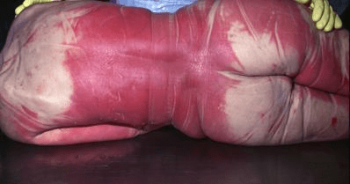The Holocaust: Difference between revisions
(Redirected page to The holohoax) Tags: New redirect Manual revert |
m (I will add more information later. Sorry for the previous edit, the images were kinda messy) Tag: Removed redirect |
||
| Line 1: | Line 1: | ||
==The Facts== | |||
===No Autopsy Reports of any Gassing victims=== | |||
There are NO autopsy reports of any Nazi gassing victims from any western doctors. Although there were many thousands of corpses available in German concentration camps by the end of the war and although at least 1,000 autopsies were performed, none showed any evidence of death by poison gas or poison. Dr. Charles P. Larson made those autopsies to find proof of gassings but found nothing. | |||
[[File:Charles-Larson.png|thumb|350px]] | |||
No other western doctors ever claimed to have found any forensic medical evidence of gassings either. So, what indicators of gassing were the doctors looking for? Larson gives no answer but the simple fact is that if there had been gassings with carbon monoxide or cyanide, the indications would have been extremely dramatic and readily visible. The corpses would have been bright cherry RED. The Soviets had supposedly performed autopsies (on red corpses from CO) to support their diesel gas van claims at the Kharkov and Krasnodar trials in 1943—but those trials were such obvious shams that almost no one takes them seriously today. | |||
[[File:COcoloringIntTextbookMaritMed_10-15_Fig_02.png|thumb|350px|Fig. 10.9.2: Bright red lividity on the dorsal side of the body as the expression of lethal carbon monoxide poisoning.]] | |||
The image above is probably the best of many available today showing what corpses from cyanide and carbon monoxide poisoning look like. This stunning image is from the Textbook of Maritime Medicine. | |||
<blockquote>“Fig. 10.9.2: Bright red lividity on the dorsal side of the body as the expression of lethal carbon monoxide poisoning. Livor mortis is bright red in cases of carbon monoxide or hydrocyanide poisoning (or in cases where the corpse is kept in cold storage). Carbon monoxide is a colourless and odourless gas that arises, for example, from incomplete fuel combustion. Thus it is always necessary – primarily for self-protection – to consider or exclude carbon monoxide poisoning, particularly when bodies with bright red lividity are found in engine rooms, after engine room fires (automatic carbon dioxide fire extinguishing system!) or in boiler houses.” | |||
Textbook of Maritime Medicine Fig. 10.9.2</blockquote> | |||
Revision as of 03:14, 14 September 2023
The Facts
No Autopsy Reports of any Gassing victims
There are NO autopsy reports of any Nazi gassing victims from any western doctors. Although there were many thousands of corpses available in German concentration camps by the end of the war and although at least 1,000 autopsies were performed, none showed any evidence of death by poison gas or poison. Dr. Charles P. Larson made those autopsies to find proof of gassings but found nothing.
No other western doctors ever claimed to have found any forensic medical evidence of gassings either. So, what indicators of gassing were the doctors looking for? Larson gives no answer but the simple fact is that if there had been gassings with carbon monoxide or cyanide, the indications would have been extremely dramatic and readily visible. The corpses would have been bright cherry RED. The Soviets had supposedly performed autopsies (on red corpses from CO) to support their diesel gas van claims at the Kharkov and Krasnodar trials in 1943—but those trials were such obvious shams that almost no one takes them seriously today.
The image above is probably the best of many available today showing what corpses from cyanide and carbon monoxide poisoning look like. This stunning image is from the Textbook of Maritime Medicine.
“Fig. 10.9.2: Bright red lividity on the dorsal side of the body as the expression of lethal carbon monoxide poisoning. Livor mortis is bright red in cases of carbon monoxide or hydrocyanide poisoning (or in cases where the corpse is kept in cold storage). Carbon monoxide is a colourless and odourless gas that arises, for example, from incomplete fuel combustion. Thus it is always necessary – primarily for self-protection – to consider or exclude carbon monoxide poisoning, particularly when bodies with bright red lividity are found in engine rooms, after engine room fires (automatic carbon dioxide fire extinguishing system!) or in boiler houses.” Textbook of Maritime Medicine Fig. 10.9.2

